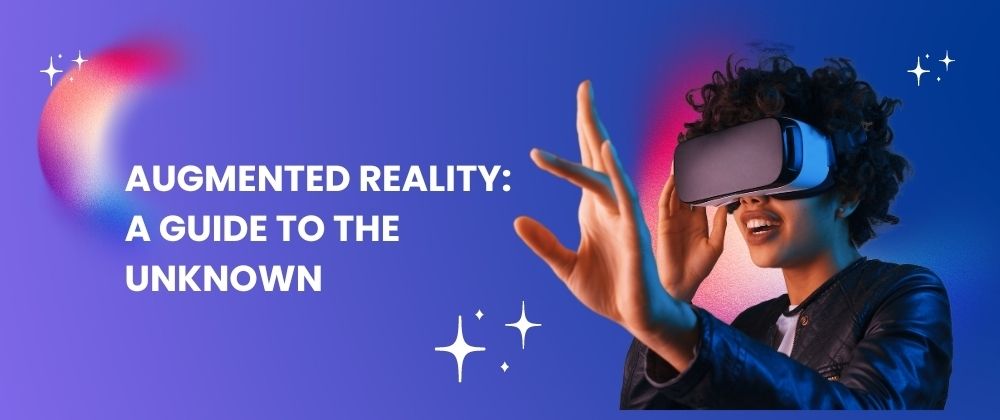Introduction
Augmented Reality (AR) is a futuristic technology that has quickly become a part of our everyday lives. But what exactly is AR? Simply put, Augmented Reality development is a technology that overlays digital information like images, sounds, and text onto the real world. Imagine pointing your smartphone at a street and seeing restaurant reviews or wearing smart glasses that provide step-by-step navigation. The importance of AR in today’s world cannot be overstated, as it enhances our interaction with the environment, providing richer and more interactive experiences.
History of Augmented Reality
The concept of AR might seem like a product of the 21st century, but its roots go back much further. Early beginnings can be traced to the 1960s when Ivan Sutherland invented the first head-mounted display system. Fast-forward to the 1990s, AR saw significant advancements in developing more sophisticated software and hardware. Major milestones include the release of the ARToolkit in 1999 and the introduction of AR apps on smartphones in the late 2000s, bringing AR to a broader audience.
How Augmented Reality Works
We need to understand AR's basic principles to understand how it works. AR systems use a combination of cameras, sensors, and advanced algorithms to detect and interpret the environment. The AR hardware includes devices like smartphones, tablets, and AR glasses, while the software processes the real-world input to overlay digital content seamlessly. By combining these elements, AR creates an interactive experience that feels both immersive and natural.
Types of Augmented Reality
AR comes in various forms, each with its unique applications and capabilities. Marker-based AR uses visual markers, like QR codes, to trigger the digital content display. Markerless AR, on the other hand, relies on GPS, camera input, or accelerometers to provide content without needing a specific marker. Projection-based AR projects digital images onto physical objects, and superimposition-based AR replaces parts of the real world with digital elements, offering a more immersive experience.
Applications of Augmented Reality
The versatility of AR means it has a wide range of applications across different industries. AR has transformed the way we play and interact with digital content in gaming and entertainment, with popular games like Pokémon Go leading the charge. Education and training benefit from AR by providing interactive and engaging learning experiences, making complex concepts easier to understand. AR assists in surgery and medical training in healthcare by providing real-time data and visualizations. Retail and marketing use AR to enhance customer experiences, allowing virtual try-on app development and interactive advertisements.
Benefits of Augmented Reality
AR offers numerous benefits that make it a valuable tool in various sectors. One of the primary advantages is the enhanced learning experience it provides, making education more interactive and effective. In customer engagement, AR creates more immersive and personalized experiences, which can lead to increased satisfaction and loyalty. Additionally, AR can improve efficiency in manufacturing and maintenance by providing real-time information and hands-free guidance.
Challenges and Limitations
Despite its many benefits, AR is not without its challenges. Technical challenges can be significant, such as ensuring accurate and seamless integration of digital and real-world elements. Privacy concerns also arise, as AR systems often require access to cameras and other sensors. Moreover, the high development costs of creating sophisticated AR applications can be a barrier for many companies.
Future of Augmented Reality
Looking ahead, the future of AR appears incredibly promising. Upcoming innovations, such as advancements in wearable technology and AI integration, are set to make AR even more accessible and powerful. The potential impact on society is immense, with AR poised to revolutionize industries, enhance everyday experiences, and create new opportunities for interaction and learning.
Conclusion
In summary, Augmented Reality is a groundbreaking technology that enriches our interaction with the world around us. AR offers a glimpse into a more interactive and connected future from its early beginnings to its current applications and potential. As we continue to explore and develop this technology, the possibilities for enhancing our daily lives are virtually limitless.
FAQs
How can AR be used in education?
AR can be used in education to create interactive and engaging learning experiences, such as virtual field trips, 3D visualizations of complex concepts, and hands-on training simulations.
Are there any health risks associated with AR?
While AR is generally safe, prolonged use can cause eye strain and discomfort. It is essential to take regular breaks and ensure proper ergonomics when using AR devices.
What industries benefit the most from AR?
AR significantly benefits the gaming, education, healthcare, retail, and manufacturing industries by enhancing user experiences, improving efficiency, and providing innovative solutions.
How can I get started with using AR?
To get started with AR, you can explore AR apps on your smartphone, invest in AR-enabled devices like smart glasses, or experiment with AR development tools like Unity and ARKit.






Top comments (0)